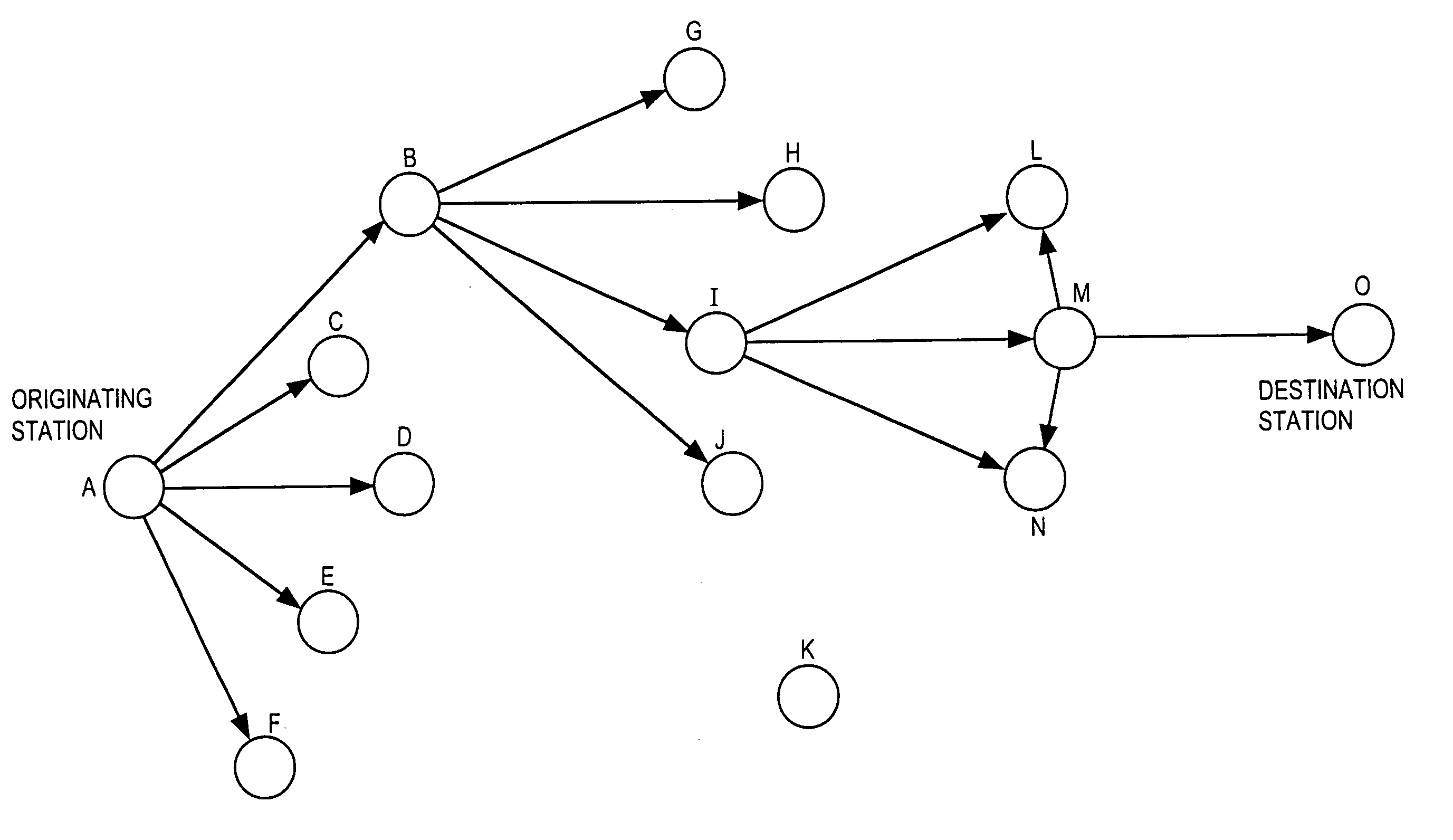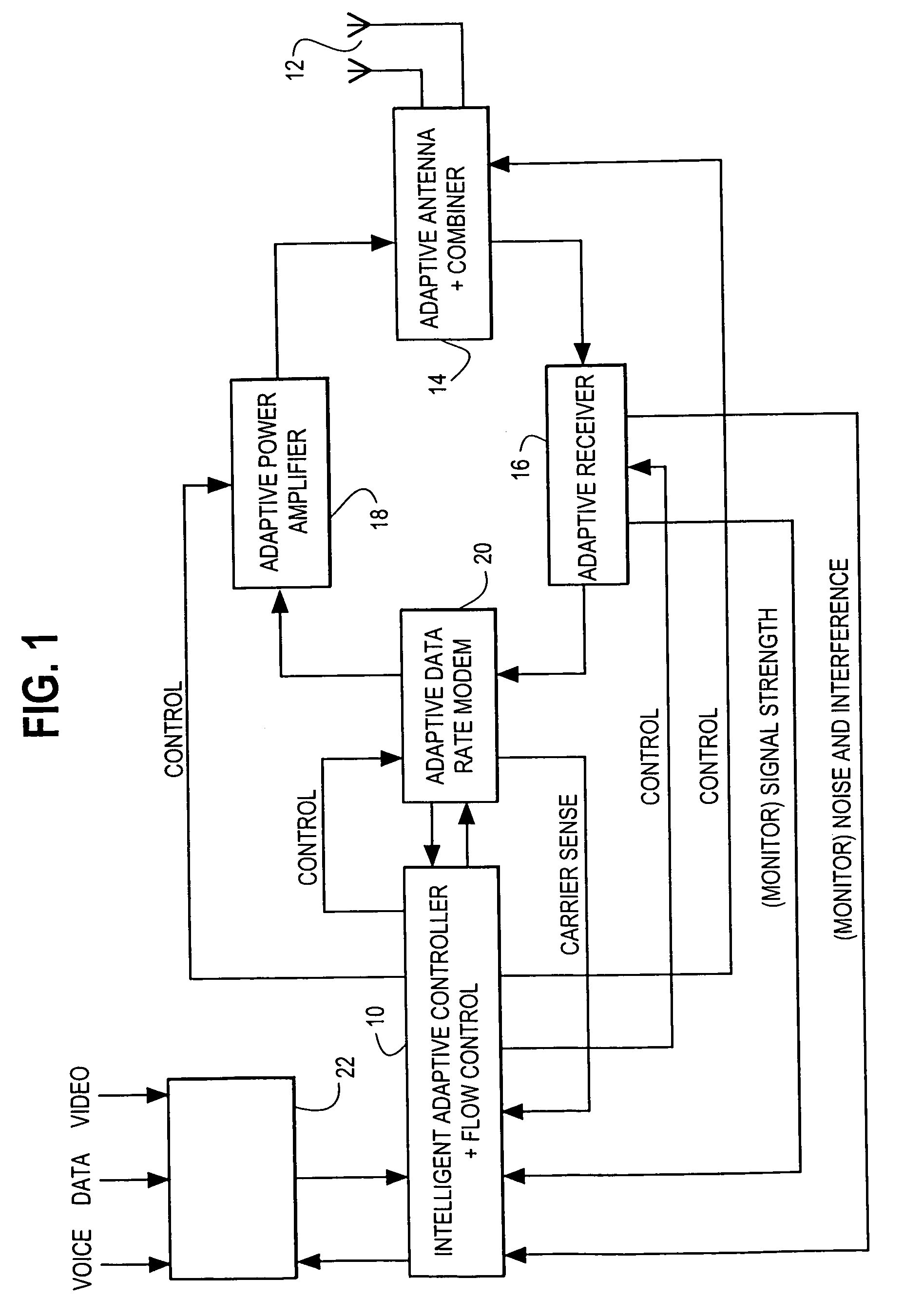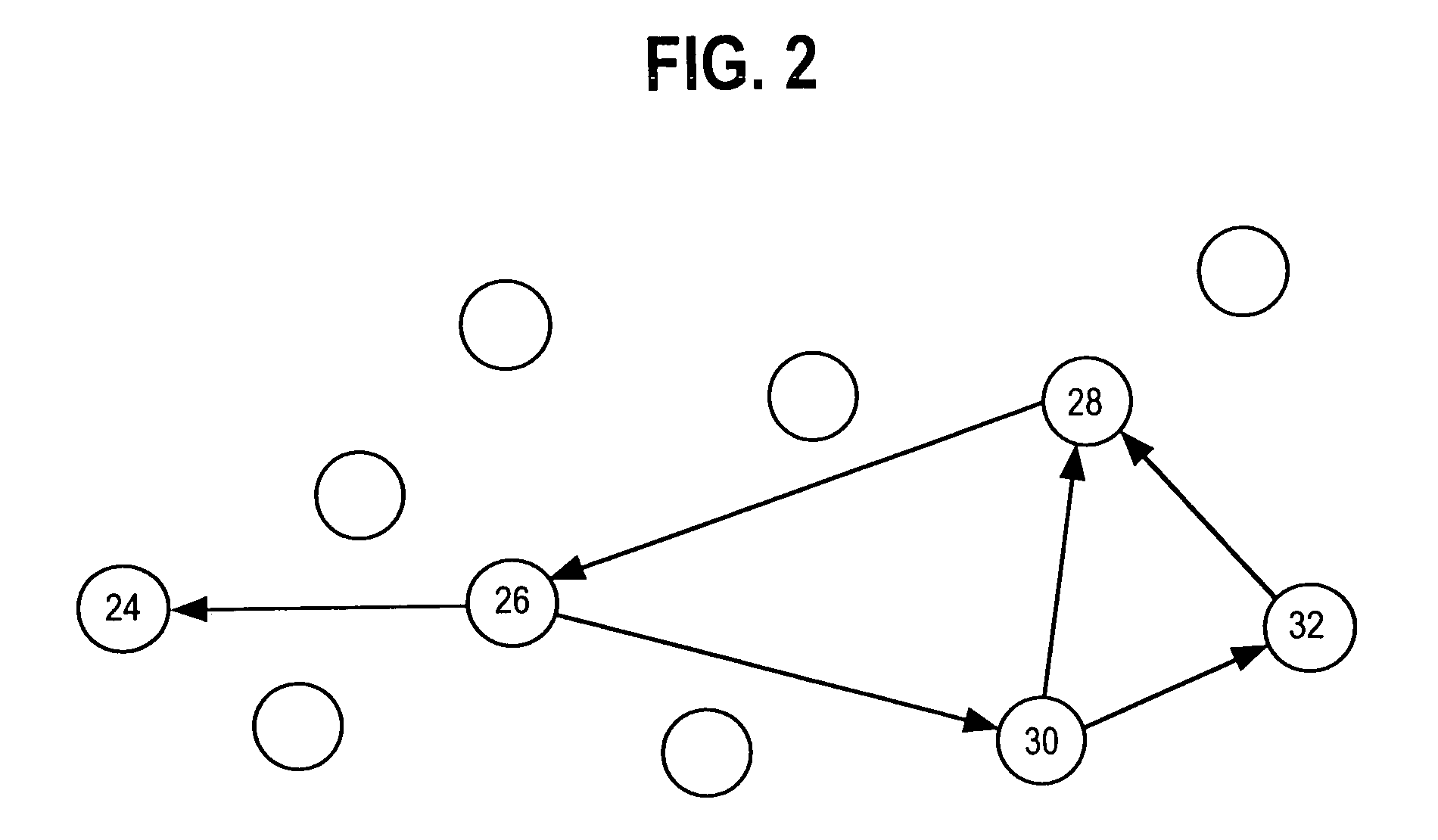Multi-hop packet radio networks
a packet radio and multi-hop technology, applied in the field of multi-hop packet radio networks, can solve the problems of remote stations in the network being restricted in their movement, controller nodes or base stations are relatively expensive, and the network is vulnerable to the breakdown of controllers or base stations
- Summary
- Abstract
- Description
- Claims
- Application Information
AI Technical Summary
Benefits of technology
Problems solved by technology
Method used
Image
Examples
Embodiment Construction
[0076]The present invention has primary application in wireless data networks, including mobile radio or cellular telephone networks, two-way paging networks, meteor burst PCN data networks and low earth orbiting and geostationary satellite environments, where rapidly and greatly changing connectivity and platform population changes militate against the use of conventional networking techniques.
[0077]To this end, the invention provides a communication network which makes use of adaptive opportunistic communication between stations in the network. The network is a full mesh network which accommodates rapidly changing connectivity between stations and routes messages dynamically between stations on a co-operative basis to improve data throughput in the network, while minimizing power consumption and interference between stations. The invention optimises the network capacity by ensuring optimal utilisation of the available spectrum in terms of capacity (Erlangs) for a given area, a giv...
PUM
 Login to View More
Login to View More Abstract
Description
Claims
Application Information
 Login to View More
Login to View More - R&D
- Intellectual Property
- Life Sciences
- Materials
- Tech Scout
- Unparalleled Data Quality
- Higher Quality Content
- 60% Fewer Hallucinations
Browse by: Latest US Patents, China's latest patents, Technical Efficacy Thesaurus, Application Domain, Technology Topic, Popular Technical Reports.
© 2025 PatSnap. All rights reserved.Legal|Privacy policy|Modern Slavery Act Transparency Statement|Sitemap|About US| Contact US: help@patsnap.com



